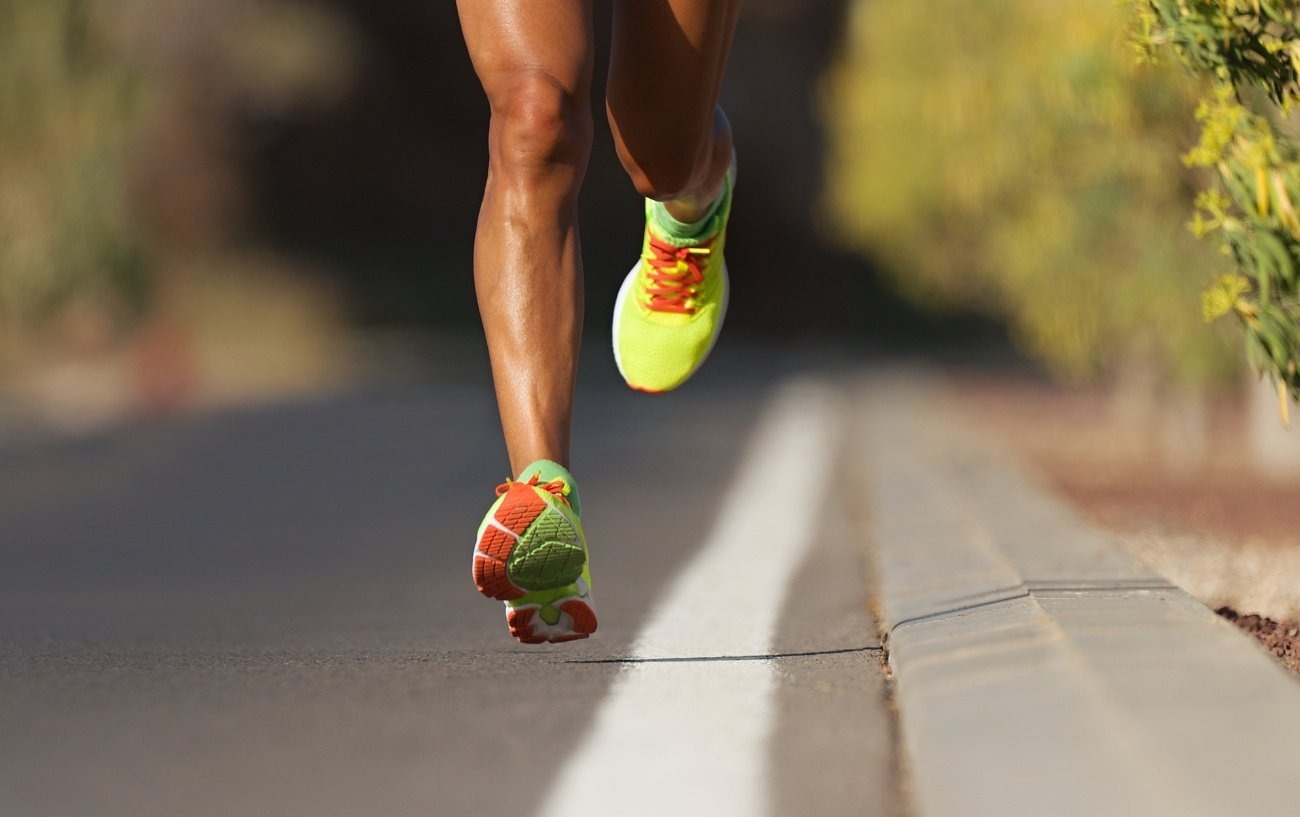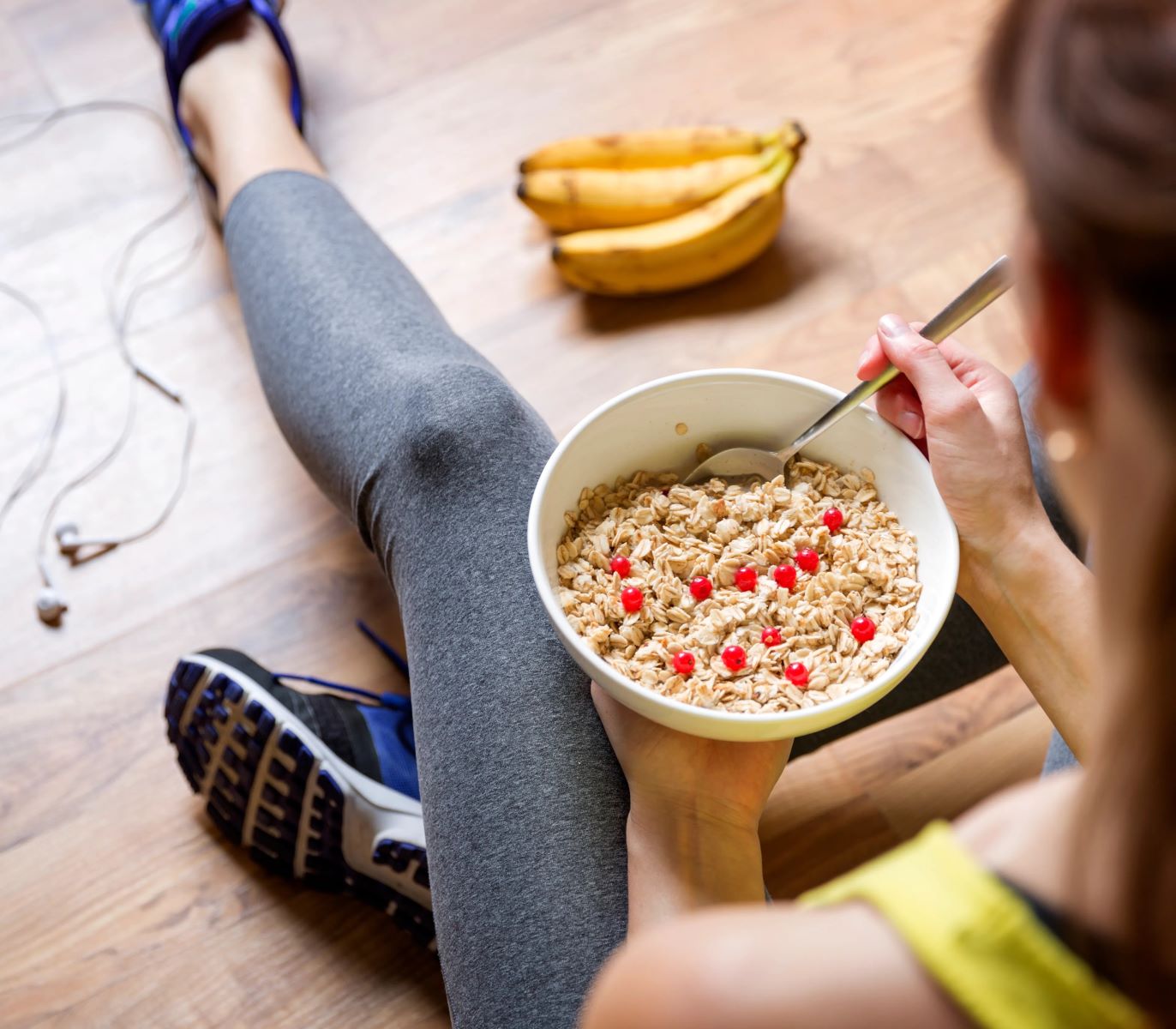

Featured
When To Carb Load For Marathon
Modified: January 22, 2024
Discover when is the ideal time to carb load for your upcoming marathon. Get expert tips on how to optimize your performance and maximize your energy levels. Featured: When To Carb Load For Marathon.
Introduction
Preparing for a marathon requires careful planning and strategizing. One crucial aspect of marathon training is nutrition, and specifically, carbohydrate consumption. Carb loading, also known as glycogen loading, is a technique used by marathon runners to maximize their energy stores and enhance performance.
Carbohydrates are the primary source of fuel for our muscles during physical activity, including running. By consuming a higher amount of carbohydrates in the days leading up to a marathon, runners aim to replenish their glycogen stores, which can help delay fatigue and improve endurance.
In this article, we will explore the concept of carb loading and its significance for marathon runners. We will delve into the science behind carb loading, discuss when to initiate the process, and provide guidelines on the recommended amount of carbs to consume. Furthermore, we will suggest suitable food options and offer practical tips for effective carb loading.
Whether you are a seasoned marathon runner or a beginner looking to tackle your first race, understanding carb loading can be instrumental in optimizing your performance and achieving your goals. So, let’s dive into the world of carb loading and discover how it can fuel you for marathon success.
What is Carb Loading?
Carb loading, also known as glycogen loading, is a strategy used by endurance athletes to maximize their glycogen stores before a long-distance event, such as a marathon. Glycogen is the storage form of carbohydrates in the body, primarily stored in the liver and muscles.
During prolonged physical activity, our muscles rely on these glycogen stores as a fuel source. By increasing carbohydrate consumption in the days leading up to a marathon, runners aim to “load” their glycogen stores to capacity, providing a readily available energy source to support their performance and delay fatigue.
The concept of carb loading emerged in the 1960s as a direct response to research that revealed the importance of glycogen stores in endurance performance. Prior to this development, athletes often followed a low-carbohydrate diet in an attempt to conserve glycogen stores. However, it was discovered that this approach actually depleted glycogen levels, leading to decreased performance.
Carb loading typically involves a combination of three main practices: tapering exercise, increasing carbohydrate intake, and reducing training volume. Tapering exercise refers to a gradual reduction in training intensity and volume in the days leading up to a marathon. This allows the body to recover and glycogen stores to replenish.
Increasing carbohydrate intake is a key component of carb loading. It is recommended to gradually increase carbohydrate consumption to around 7-10 grams per kilogram of body weight per day. This higher intake of carbohydrates stimulates glycogen synthesis and ensures that glycogen stores are fully replenished.
Finally, reducing training volume during the carb loading phase helps prevent excess glycogen depletion and allows the body to fully recover before the marathon. This does not mean completely ceasing exercise, but rather reducing the intensity and duration of workouts.
Carb loading is not a one-size-fits-all approach. Each runner may have unique carbohydrate needs based on their body composition, training regimen, and individual tolerance. Therefore, it is essential to tailor carb loading strategies to personal preferences and experiment with different approaches during training to find what works best for you.
Why is Carb Loading Important for Marathon Runners?
Carb loading plays a significant role in the performance and endurance of marathon runners. Here are a few key reasons why carb loading is important:
1. Increased Glycogen Stores: The primary benefit of carb loading is the ability to increase glycogen stores in the muscles and liver. During a marathon, the body relies heavily on these glycogen stores for energy. By maximizing glycogen levels through carb loading, runners can significantly delay the onset of fatigue and maintain a steady pace throughout the race.
2. Improved Endurance: When glycogen stores are depleted, the body turns to alternative energy sources such as fat. While fat can provide energy, it is not as efficient as glycogen. Carb loading ensures that runners have a sufficient amount of easily accessible glycogen to sustain their endurance and performance during the entire marathon distance.
3. Delayed Fatigue: The depletion of glycogen stores is one of the main causes of fatigue during intense exercise. By loading up on carbohydrates before a marathon, runners can push back the point at which their glycogen levels become critically low. This delay in glycogen depletion can help prevent the “hitting the wall” phenomenon, which is characterized by a sudden loss of energy and extreme fatigue.
4. Enhanced Performance: Adequate carbohydrate intake is linked to improved performance in endurance activities. Carbohydrates are the body’s preferred fuel source for high-intensity exercise. By properly carb loading, runners can optimize their energy levels, allowing them to run at a faster pace for a longer period of time.
5. Recovery Support: Carbohydrate consumption also plays a crucial role in the post-marathon recovery process. After a long-distance race, the body needs to replenish glycogen stores to aid in muscle repair and restoration. Properly executed carb loading can help expedite the recovery process and reduce muscle soreness.
It is important to note that carb loading alone will not guarantee success in a marathon. Regular training, adequate hydration, and proper race-day nutrition are also essential factors. Carb loading should be considered as part of a holistic approach to marathon preparation, combining various strategies to optimize performance and achieve personal goals.
How does Carb Loading Work?
Carb loading works by maximizing glycogen stores in the body, which serves as a fuel source during endurance activities such as marathon running. Let’s take a closer look at how the process of carb loading works:
1. Glycogen Depletion: In the days leading up to carb loading, many runners employ a technique known as glycogen depletion. This involves engaging in a period of prolonged exercise with reduced carbohydrate intake. By depleting glycogen stores through exercise and a low-carb diet, the body becomes more receptive to storing glycogen during the subsequent carb loading phase.
2. Tapering Exercise: As mentioned earlier, tapering exercise is an essential component of carb loading. During the taper period, runners gradually reduce the intensity and volume of their training. This allows the body to recover and glycogen stores to replenish without the additional stress of intense workouts. Tapering also ensures that the body is well-rested and prepared for race day.
3. Increasing Carbohydrate Intake: The core principle of carb loading is to increase carbohydrate consumption in the days leading up to the marathon. The goal is to consume around 7-10 grams of carbohydrates per kilogram of body weight per day. Carbohydrates are the body’s primary source of energy, and by increasing intake, glycogen stores are refueled to their maximum capacity.
4. Glycogen Supercompensation: As carbohydrate intake increases, the body responds by storing excess glucose in the muscles and liver as glycogen. This process is known as glycogen supercompensation. The increased glycogen stores provide a readily available energy source for the muscles during prolonged physical activity, ensuring sustained endurance and delaying fatigue during the marathon.
5. Timing and Duration: The timing of carb loading is crucial. It typically starts around 2-3 days before the marathon. This timeframe allows the body enough time to optimize glycogen stores while minimizing the risk of feeling bloated or experiencing gastrointestinal discomfort. Carb loading should continue until the day before the race, after which a balanced meal is recommended for race-day preparation.
6. Personalization and Experimentation: Carb loading is not a one-size-fits-all approach. Each runner may have unique carbohydrate needs and preferences. It is essential to personalize and experiment with carb loading strategies during training to find the approach that works best for you. Some runners may find that a higher carbohydrate intake is beneficial, while others may need to adjust the types of carbohydrates consumed to avoid digestive issues.
By effectively implementing carb loading, runners can optimize their glycogen stores and ensure they have sufficient energy for the demands of a marathon. However, it is essential to strike a balance and avoid overloading on carbohydrates, as this can lead to bloating, sluggishness, and discomfort during the race.
When should you start Carb Loading?
The timing of when to start carb loading is crucial to ensure optimal glycogen stores for marathon day. The general recommendation is to begin carb loading 2-3 days before the race. Here are some factors to consider when determining the appropriate time to start carb loading:
1. Training Schedule: Take into account your training schedule leading up to the marathon. You should complete your last long run or high-intensity workout about a week before the race. This allows the body enough time to recover and replenish glycogen stores before initiating carb loading.
2. Tapering Period: The carb loading phase typically coincides with the tapering period – a gradual reduction in training volume and intensity before the marathon. It is during this period that the body has the opportunity to fully recover and maximize glycogen stores. Starting carb loading at the beginning of the tapering period allows for sufficient time to replenish glycogen levels.
3. Experimentation: Since carb loading is a personalized process, it may require some experimentation to determine the ideal timing for your body. Some runners might find that starting carb loading two days before the race is sufficient, while others may benefit from starting three days prior. Test different approaches during your training to find what works best for you.
4. Digestive Comfort: Carb loading involves increasing carbohydrate intake, which can sometimes lead to digestive discomfort, such as bloating or gastrointestinal issues. It is essential to consider your body’s tolerance and plan accordingly. Starting carb loading too close to the race might increase the risk of experiencing gastric distress. Starting earlier and gradually increasing carbohydrate intake allows the body to adapt and minimize digestive discomfort on race day.
5. Body Composition and Carbohydrate Needs: Each individual’s carbohydrate needs may vary based on factors such as body composition and training intensity. Runners with higher lean muscle mass may have larger glycogen storage capacity and might not need as long of a carb loading phase. On the other hand, runners with lower muscle mass or higher training demands may need extra time to load up on carbohydrates.
Ultimately, the goal is to time your carb loading phase to ensure your glycogen stores are at their peak on race day. Starting carb loading 2-3 days before the marathon, in conjunction with the tapering period, allows for adequate rest and glycogen replenishment. However, it is important to listen to your body, find what works best for you through personal experimentation, and consult with a nutritionist or sports scientist for personalized advice.
How many carbs should you consume during Carb Loading?
The amount of carbohydrates you should consume during carb loading depends on factors such as your body weight, training intensity, and personal preferences. The general guideline is to aim for a daily carbohydrate intake of around 7-10 grams per kilogram of body weight. Here are a few considerations to determine the appropriate amount of carbs for your carb loading phase:
1. Body Weight: Your body weight plays a significant role in determining your carbohydrate needs during carb loading. As a general rule of thumb, aim for the higher end of the recommended range (10 grams per kilogram of body weight) if you have a lower body weight or if you generally rely more on carbohydrates for energy during exercise. Conversely, if you have a higher body weight or tend to have a greater reliance on fat for energy, you may opt for the lower end of the range (7 grams per kilogram of body weight).
2. Training Intensity: Consider the intensity of your training leading up to the marathon. Higher training intensity typically requires more carbohydrates to replenish glycogen stores adequately. If you have been engaging in intense training sessions or high-volume workouts, you may lean towards the higher end of the carbohydrate range to ensure sufficient glycogen replenishment.
3. Personal Preferences: It is essential to listen to your body and adjust your carbohydrate intake based on your personal preferences and tolerance. Some individuals may find they function better with slightly higher carbohydrate intake, while others may prefer a more moderate intake. Experimentation during your training period can help you determine what works best for your body.
4. Balance and Variety: While carbs should form the bulk of your macronutrient intake during carb loading, it is also important to maintain a balanced diet. Ensure that your carbohydrate sources come from a variety of whole, unprocessed foods such as whole grains, fruits, vegetables, and legumes. This will provide you with a range of nutrients and prevent excessive reliance on simple sugars or refined carbohydrates.
5. Spread Throughout the Day: Aim to spread your carbohydrate intake throughout the day rather than consuming a large portion in a single meal. This allows for more efficient glycogen replenishment and minimizes the risk of digestive discomfort. Dividing your carbohydrate intake across several meals and snacks helps maintain stable blood sugar levels and provides a continuous source of energy.
Remember that carb loading is a personal process, and the recommended carbohydrate range serves as a starting point. It is crucial to listen to your body, adjust based on your training and body composition, and seek guidance from a nutritionist or registered dietitian to tailor your carbohydrate intake to your specific needs.
What Foods Should You Eat During Carb Loading?
During the carb loading phase, it is important to focus on consuming high-quality carbohydrates that provide essential nutrients and promote sustained energy levels. Here are some food choices to consider:
1. Whole Grains: Whole grain sources such as quinoa, brown rice, oats, and whole wheat bread are rich in complex carbohydrates, fiber, and micronutrients. They provide a slow and steady release of energy, keeping you fueled throughout your marathon. Choose whole grain options over refined grains for maximum nutritional benefit.
2. Starchy Vegetables: Starchy vegetables like sweet potatoes, potatoes, and winter squash are excellent sources of carbohydrates. They also deliver essential vitamins, minerals, and antioxidants. Roast, bake, or steam them for a nutritious and satisfying addition to your carb loading meals.
3. Fruits and Berries: Fruits and berries not only provide carbohydrates but also offer a wide range of vitamins, minerals, and antioxidants. Bananas, oranges, berries, and grapes are popular options that can be consumed whole or added to smoothies, yogurts, or cereal for a delicious and nutritious boost of carbs.
4. Legumes: Foods like lentils, chickpeas, and black beans are not only high in carbohydrates but also pack a good amount of protein and fiber. They provide a steady release of energy and contribute to overall satiety. Incorporate legumes as a main ingredient in soups, stews, salads, or even as a side dish.
5. Pasta and Rice: Whole wheat pasta and brown rice are popular choices for carb loading. They are easy to prepare and can be combined with various sauces, vegetables, and lean proteins for a balanced meal. Choose whole wheat pasta over refined options and pair with nutrient-rich toppings for added benefits.
6. Energy Bars and Gels: During intense training or on race day, energy bars and gels can be convenient options to consume quickly absorbed carbohydrates. Look for options that contain a mix of simple and complex carbohydrates, as well as electrolytes to replenish essential minerals lost through sweat.
7. Hydration: Hydration is a crucial aspect of carb loading, as well as overall marathon preparation. Be sure to drink plenty of water and include hydrating foods such as fruits, vegetables, and soups in your carb loading plan. Electrolyte-rich beverages, such as sports drinks or coconut water, can also help replenish important nutrients.
Remember to focus on consuming a balanced diet during carb loading. Incorporate lean sources of protein, healthy fats, and vegetables alongside your carbohydrate choices to support muscle recovery and overall nutrition. As always, individual preferences and dietary restrictions should be taken into account, so choose foods that align with your needs and taste preferences.
Tips for Effective Carb Loading
Carb loading is a strategic process that requires careful planning to maximize glycogen stores and optimize performance. Here are some tips to ensure an effective carb loading phase:
1. Gradual Increase: Rather than abruptly changing your diet, gradually increase your carbohydrate intake leading up to the marathon. This allows your body to adjust to the higher carbohydrate load and minimizes the risk of digestive discomfort.
2. Focus on Complex Carbs: Choose complex carbohydrates such as whole grains, fruits, and vegetables. These choices provide sustained energy due to their higher fiber content, as well as essential vitamins and minerals.
3. Avoid Excessive Fat: While some healthy fats are important for overall nutrition, excessive fat intake can slow down digestion and hinder glycogen synthesis. Limit your intake of high-fat foods during carb loading to ensure optimal carbohydrate absorption.
4. Don’t Forget Protein: Although carbohydrates are the main focus during carb loading, it’s important not to neglect protein. Including lean protein sources such as chicken, fish, tofu, or legumes in your meals can support muscle recovery and help maintain overall nutrition.
5. Maintain Hydration: Proper hydration is essential for carb loading and overall marathon preparation. Ensure that you are drinking enough water throughout the day to support glycogen synthesis and performance. Electrolyte-rich beverages can also be beneficial, especially during intense training or on race day.
6. Be Mindful of Fiber: While fiber is important for digestive health, consuming excessive amounts during carb loading can lead to gastrointestinal discomfort. Monitor your fiber intake and choose sources that are lower in fiber to avoid any potential issues.
7. Stick to Familiar Foods: Carb loading is not the time to experiment with new or unfamiliar foods. Stick to foods that you are accustomed to and have worked well for you during training. This reduces the risk of digestive issues or allergic reactions on race day.
8. Plan Your Meals: Create a meal plan for the carb loading phase to ensure you are consuming enough carbohydrates throughout the day. Space out your carbohydrate-rich meals and snacks evenly to promote steady energy levels.
9. Incorporate Carb-Rich Snacks: During carb loading, it can be helpful to incorporate snacks that are easy to carry and consume on the go. Examples include energy bars, fruits, pretzels, or rice cakes. These snacks provide a quick boost of carbohydrates when needed.
10. Listen to Your Body: Everyone’s carbohydrate needs and tolerances are different. Pay attention to how your body responds during the carb loading phase. Adjust your intake and types of carbohydrates based on your feelings of energy, satiety, and digestion.
By following these tips, you can ensure an effective carb loading phase that maximizes your glycogen stores and optimizes your performance on marathon day. Remember that carb loading is just one component of marathon preparation, so continue to focus on proper training, rest, and overall nutrition to achieve your goals.
Conclusion
Carb loading is an essential technique for marathon runners looking to optimize their performance and endurance. By strategically increasing carbohydrate intake in the days leading up to the race, runners can maximize glycogen stores and fuel their bodies effectively during the marathon.
Understanding the principles and guidelines of carb loading is crucial for success. Starting the carb loading phase 2-3 days before the marathon, in conjunction with the tapering period, allows for adequate rest and glycogen replenishment. Aim for a daily carbohydrate intake of around 7-10 grams per kilogram of body weight, focusing on complex carbohydrates from whole grains, starchy vegetables, fruits, and legumes.
It’s important to personalize your carb loading strategy based on factors such as body weight, training intensity, and personal preferences. Experimentation during training can help you determine the optimal timing and amount of carbs that work best for your body.
Remember to listen to your body and make adjustments as needed. Consider incorporating lean protein sources, staying hydrated, and being mindful of fiber intake during the carb loading phase. Stick to familiar foods and create a meal plan to ensure you are consuming enough carbohydrates throughout the day.
Carb loading is just one piece of the puzzle, and it should be combined with a comprehensive marathon training plan that includes regular workouts, proper hydration, and adequate rest. Together, these strategies will help you achieve peak performance on marathon day.
So, embrace the power of carb loading, fuel your body mindfully, and embrace the journey towards marathon success. With proper carb loading techniques, you’ll be better equipped to tackle the challenges of the marathon distance and reach your performance goals.









